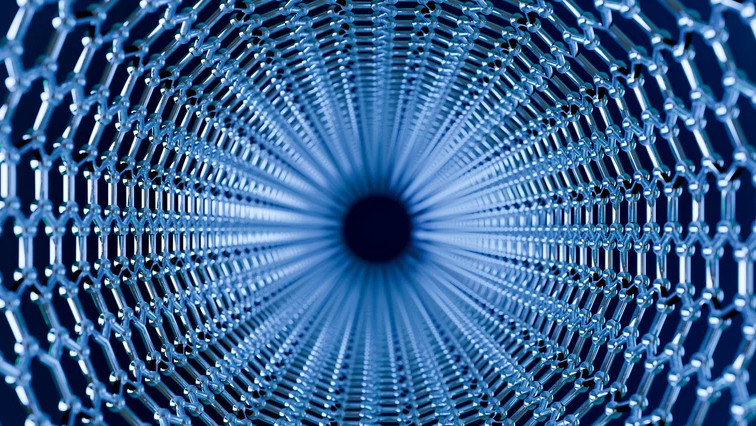Increasingly, however, these technologies are becoming a reality. Scientists from nearly every field are utilizing nanotechnology to revolutionize their work. Applications exist from touchscreen manufacturing and preventing heart attacks, to entertainment and the environment. In the near future, we'll likely be surrounded by a nearly invisible population of nanoparticles, each tailor-made for their intended use. They'll inhabit every part of our environment, from the ocean to the atmosphere, and will even make their way inside our bodies.
The work has already begun, as scientists engineer increasingly small machines, and push them into the nooks and crannies of our world. It's possible that you've encountered nanotechnology already, and just didn't know it. If you haven't, rest assured that the swarm is coming, and it will change nearly every facet of our world.
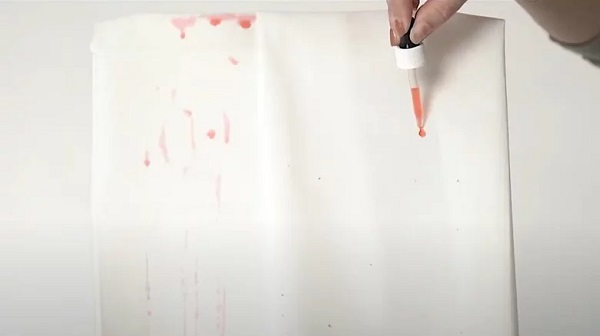
Clothes of the Future
It's difficult to imagine ways in which we could make ordinary clothing high-tech. There's almost nothing as mundane as a t-shirt, or a pair of socks, but nanotechnology might be changing all of that. Treating existing fabric materials with nanoparticles can grant them a whole host of interesting characteristics.
A number of companies have begun work in this space, including Nanotex, Aspen Aerogel, BASF, and Nano-Horizons, according to a study published in the journal Nanomaterials. Precisely how each company constructs and applies their nanoparticle or nanofiber coatings to fabrics is difficult to ascertain, as they are often trade secrets, but the published research reveals some details about their function.
These coatings work by applying a layer of hydrophobic molecules to the fabric, making them capable of repelling liquids as simple as water, or as complex as coffee, wine, and mustard. Consequently, treated fabrics are seemingly impervious to getting wet or getting stained. The coatings themselves are nearly weightless, and don't otherwise fundamentally change the nature of the fabric. As a result, there's no noticeable change in the experience of the wearer.
In addition to preventing stains, research has shown resistance to bacteria through the production of reactive oxygen species. The upshot is that odor-causing bacteria doesn't accumulate in the material, and your clothes smell fresher, longer.

Making Machines Lighter and Stronger
Nanotechnology has the potential to allow engineers to modify existing materials, and improve their characteristics. In the same way that mixing different kinds of metals can create better alloys, mixing mundane materials with nanoparticles can change the way those materials behave in interesting ways.
To that end, scientists from Michigan State University crafted a system for separating layers of graphite into sheets less than 10 nanometers thick (via the Michigan State University). For comparison, the average human hair is between 80,000 and 100,000 nanometers wide, according to the National Nanotechnology Initiative.
Their material, which is called xGnP Exfoliated Graphite NanoPlatelets, can be used on its own, or combined with plastic to make products stiffer, lighter, and stronger. They propose that this novel material combination could be used to make stronger and more fuel-efficient cars and even rockets, which are lighter but strong enough to get into space.
Moreover, the material is electrically and thermally conductive, and is small enough to be used in transparent coatings, opening up another avenue of application in the energy sector. In the future, it could be used in a new class of batteries, or as a conductive coating for solar panels.
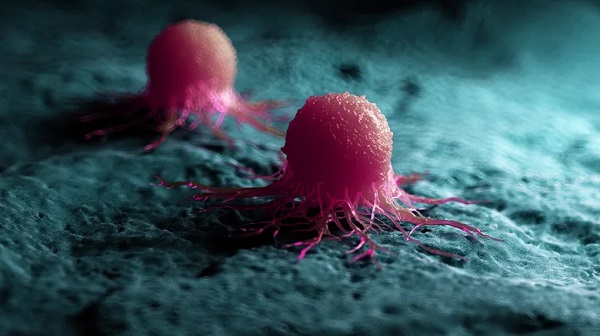
Better Ways of Fighting Cancer
Standard cancer treatments are wide-ranging, and run the risk of damaging nearby healthy tissues. Whether a doctor chooses surgery, chemotherapy, or radiation, it's difficult to target tumors exclusively. As a result, some patients have extended recovery times, and unwanted side effects (via the National Cancer Institute).
Nanotech therapies offer the ability to enter the body, and deliver drugs or other treatments directly to the targeted cancer cells without damaging healthy tissues. As the National Cancer Institute explains, despite nanoparticles being smaller than individual cells, they are still large enough to enclose molecular compounds. That makes them effective drug-carrying vessels. Moreover, they can be tuned to seek out characteristics specific to cancerous tissues. In essence, they don't open fire until they find the right target.
In the fight against cancer, nanotechnology isn't stopping at just delivering new treatment methods; it's also helping to make existing treatments more effective. Some cancers have native resistance to treatments like chemotherapy and immunotherapy. However, researchers at Tel Aviv University have developed nanoparticles that use RNA to effectively disable a tumor's built-in armor, leaving them vulnerable to attack from conventional treatments (via the Tel Aviv University). It carries a one-two punch which turns off the cancer's HO1 enzyme to weaken the tumor's defenses while also ramping up the patient's immune response.

Ultra-High Definition TV
As consumers, we constantly expect our televisions to provide bigger and better images. Sometimes, however, in order to make something better, you have to look to the very small, and nanotechnology is making that possible.
LG, one of the world's leading television manufacturers, developed what they're calling NanoCell technology. It's a proprietary technology, so you'll only find it on LG TV sets unless they decide to license the technology to competitors in the future (via How-To Geek).
Because it's proprietary, we don't know precisely what's going on beneath the surface, but we do know a little about how it works thanks to the information in LG's product descriptions. According to the company, NanoCell TVs take advantage of a layer of nanoparticles distributed between the screen and the light source. Those particles filter out certain wavelengths of light from the RGB spectrum. The intention is to block dull colors, and let only the sharpest colors come through. As a result, the picture is reportedly more lifelike and vibrant.
Since the wonders of nanotechnology have largely been imagined on screen, it's only fair that visual entertainment becomes one of the first ways it interfaces with the public.
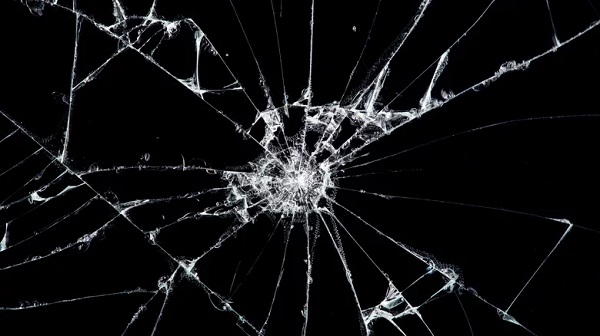
Self-Healing Electronics
Getting your hands on a new phone, television, computer, or other electronic gadget is a considerable investment. It's not something most of us do on a whim, and the worst thing that can happen after the money has left your bank account is for your new toy to take damage. Cracked screens or broken internal electronics can quickly turn your investment into an expensive paperweight. If only electronic devices could heal like our bodies do. With the right kind of nanotech, now they can.
Scientists from the Israel Institute of Technology were working with double perovskite nanocrystals when they discovered they were capable of healing damage to their structures under the right conditions (via Advanced Functional Materials). Double perovskites have electro-optic characteristics, making them a good alternative to materials currently used in electronic products.
Viewing the crystals with an electron microscope, scientists realized they sometimes gained crystal voids (read: damage). By engineering the surface of the crystals, scientists were able to get them to remove innate voids, as well as ones that were acquired. The crystals were able to move the voids toward the edge and out, effectively healing themselves (via the Technion Institute of Technology). This could lead to a class of electronics that are capable of repairing their own damage.
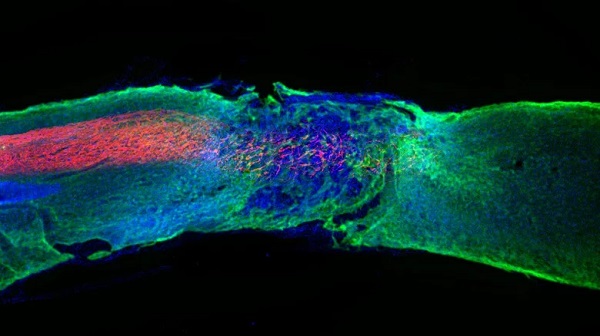
Healing Spinal Injuries
Spinal injuries can be one of the most devastating things to happen to a person in terms of recovery, largely because the spine is so bad at healing itself. Typically, after a severe spinal injury, fibrous scar tissue builds up around the wound site, preventing the nerves and blood vessels from reconnecting. The body sends the signals to heal the wound, but not to regenerate the previous connections.
Now, a recent study carried out by scientists at Northwestern University may have found a solution. Their treatment utilized an injection of nanofibers which created a scaffold capable of stimulating connection and communication between spinal tissues, facilitating regeneration (via Science).
The injection was comprised of supramolecular peptide fibril scaffolds with two peptide sequences. Once injected, they slowed down the formation of fibrous scar tissue, promoted regeneration of axons, prevented neuron death, and improved the production of blood vessels (via the Northwestern University).
The treatment was tested on mice with spinal injuries consistent with paralysis. Incredibly, four weeks after treatment, the mice were walking again. Moreover, the injection is absorbed by the body with no observable side effects in about 12 weeks.
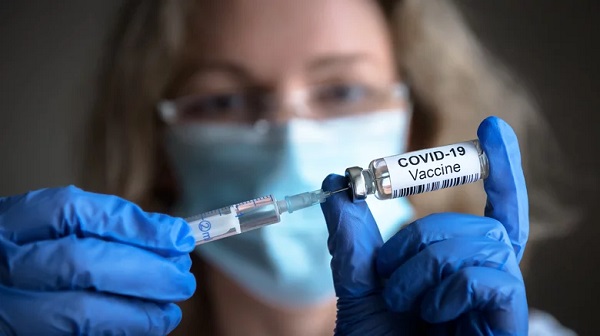
Time-Delayed Vaccines
Getting your annual flu shot is a one-time deal. You walk into your local pharmacy, get a quick poke, and you're protected for the season. Many COVID-19 vaccines, however, require multiple doses given at varying time intervals. That means you have to make several appointments with your pharmacy or your doctor to get shots, sometimes weeks or months apart. This can be particularly challenging with children, or just for folks with busy schedules.
In the future, you might be able to get an entire schedule of vaccines in a single shot, thanks to nanotechnology.
According to a 2022 study published in Science Advances, scientists used nanotechnology to create capsules with a hollow core that housed multiple vaccine doses. These doses are then released at later dates. The secret to the nano-capsule's success is the composition of its lid, and the way it reacts with the body. Over time, the lid of the shell becomes increasingly porous until it reaches a critical breakdown point, and opens up. When that happens, the payload is released into the body. Moreover, the time in which the drug payload is released can be controlled by the composition of the capsule.
That means a single injection could house capsules of several different constructions, designed to deliver one dose immediately, and one or more doses weeks or months later, all without having to visit the doctor's office again.
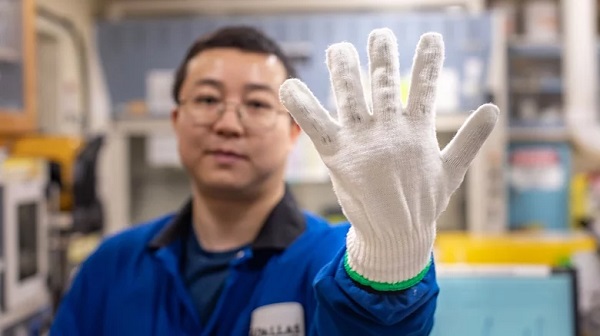
New Energy Sources
As human-driven climate change rages on, the search for alternative energy sources is kicking into high gear. Scientists are now developing nanotechnology systems for harvesting energy from the environment, or even from human movements.
A team at the University of Texas at Dallas has created a form of yarn, which they call twistrons, that contains nanofibers. When the fibers are stretched or bent, the kinetic energy is translated into electrical energy, which can be measured or harvested (via the University of Texas at Dallas).
In terms of large-scale energy generation, the fibers could be implemented into devices placed in the environment, and gather energy from the natural movements of waves or wind. Perhaps more interestingly, the fibers can be woven into everyday garments and worn, generating electricity as the wearer goes about their day.
To test that potential application, researchers crafted a glove containing twistrons. The wearer then moved their fingers to form various letters in American Sign Language. Not only did the glove successfully generate electricity, but the researchers were also able to distinguish the different signs being made based on the energy output. As a result, the glove could also be used as a self-powered sign language translation device.

Water Purification
Access to clean drinking water is one of the most basic human needs and yet, as of 2019, roughly one third of the global population didn't have a reliable source of clean water (via the World Health Organization).
Gathering enough water for large populations, ensuring it is safe to drink, and delivering it to the masses generally requires substantial infrastructure. Building those systems is expensive and time consuming, but nanotechnology might offer an alternative solution. Scientists from École polytechnique fédérale de Lausanne, a public research university in Switzerland, have created a new water filtration device using titanium dioxide nanowires and carbon nanotubes (via Nature).
When coupled with sunlight, the system effectively kills off pathogens in water through a photocatalytic reaction. This results in the production of reactive oxygen species like hydrogen peroxide. The study provides evidence that the system is effective at clearing the water of bacteria and viruses, and it might also be good at removing other contaminants. In a pilot study, researchers gained preliminary evidence suggesting the system also removed traces of some drugs and pesticides. Their test device was relatively small, and could be deployed to at-need regions without relying on complex infrastructure.

Oil Spill Clean Up
Oil spills are among the most damaging environmental disasters possible, and they are famously difficult to clean up. On March 24, 1989, Exxon Valdez spilled 11 million gallons of crude oil at Prince William Sound in Alaska. The oil covered roughly 1,300 miles of coastline, and killed countless animals. Despite a concerted cleanup effort, pockets of oil are still found in the area today (via History).
Shifting to alternative energy sources (perhaps the twistron materials listed above) could prevent any future oil spills but, barring that, nanoparticles could provide an alternate cleanup solution. Scientists are exploring an array of metal nanoparticles including iron oxide particles, nanocomposites, and carbon nanotubes as potential methods of simplifying oil spill cleanup efforts (via Environmental Nanotechnology, Monitoring & Management).
The process is relatively simple. These particles could be deployed at a spill site where they'll mix in with the oil. Because the particles are hydrophobic, there's little risk that they'll mix in with the water. Once we have an oil and nanoparticle slurry, it's just a matter of using magnets to grab onto the mix, and separate it from the water (via CNN). What's more, researchers suggest the particles could then be removed from the oil, if desired, so that it could be used as intended.

Reducing Climate Change
Getting our planet to a carbon neutral or carbon negative state in the relatively near future is a big project, but it's one we're going to need to achieve if we hope to mitigate the worst effects of climate change. One way to do that is to reduce emissions; the other is to capture emissions. It's likely we're going to need a combination of the two as carbon concentrations are already higher than we'd like them to be.
A startup called SkyNano was founded by Anna Douglas while she was pursuing a Ph.D. from Vanderbilt University. The company has developed an electrochemical process that captures gaseous CO2 emissions, and converts them into solid carbon nanotubes. Greenhouse gases go in, and carbon nanotubes and oxygen come out (via Forbes).
The technology has the benefit of sequestering carbon that would have made its way into the atmosphere — indeed, the company claims the carbon can be stored for more than 1,000 years — and there are additional downstream applications. As made apparent by the other technologies we've discussed, carbon nanotubes have all manner of applications across the nanotechnology space.
This technology is capable of taking one of humanity's biggest problems, and transforming it into a useful resource that could do a lot of good. They estimate they can address 10% of global emissions, which isn't a whole solution on its own, but it's nothing to scoff at.
Read the original article on SlashGear.

